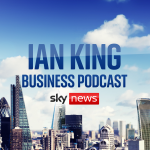There are lots of reasons to be startled by the latest inflation figures.
The consumer price index, which measures the cost of a typical “shopping basket” of goods and services, jumped from 2% in July to 3.2% in August.
Not only does this put it at the highest level in nearly a decade, the month-on-month change from July to August is the biggest increase since the CPI was introduced as a measure of prices in 1997.
Please use Chrome browser for a more accessible video player
This is, in other words, big stuff.
But does it follow that inflation is going ever higher?
The question is hardly trivial, given an inflationary spiral, where prices rise ever higher, is one of the great fears of all economists.
It was high inflation which contributed to economic instability and high unemployment in the 1970s, an ordeal which took many years, if not decades, to recover from.
Inflation sees sharpest increase on record – ONS
COVID-19: Javid defends return to office advice after experts warn of hospital admissions soaring
Apple launches new iPhone 13s with diagonally-aligned cameras and smaller notch
As with so much in economics, it’s possible to argue both sides here.
On the one hand, a lot of the upward pressure in prices at the moment is as much a function of what was happening last year than what’s happening now.
This time last year, the cost of going out for lunch at restaurants across the UK had dropped very sharply because of the chancellor’s Eat Out to Help Out scheme.
One year on, restaurant prices are no longer discounted, so there is what economists call a “base effect” pushing up the inflation index.
If this were all that was going on one could be assured that inflation would eventually subside.
Indeed, that is likely to be the broad message we get in the coming weeks from the Bank of England Governor Andrew Bailey, who is now duty-bound to provide a letter of explanation as to why CPI is now more than a percentage point above the monetary policy committee’s 2% target.
He has consistently argued that many of the effects pushing up prices are temporary, and that while inflation will rise further, it will abate next year.
The problem, however, is that the Bank has repeated this argument for most of this year, yet inflation has kept rising faster and further than the Bank’s forecasts implied.
Not long ago it was projecting that prices would not rise beyond 3% this year.
Now it looks like the CPI index will get to 4% before the year is out.
And when you look across that “shopping basket” of different categories of goods and services, you see a lot of evidence of rising prices.
Across most raw materials like copper and steel, timber and wood, cement and masonry, food and drinks, prices seem to be rising far faster than usual.
And then there’s energy.
In the past few months, wholesale energy prices – not just in the UK but across Europe – have risen gradually and then sharply.
In the past week electricity prices have spiked to the highest level on record.
There are plenty of reasons for this: a shortage of gas and lower-than-usual wind speeds in the North Sea among them.
But the upshot is that we are facing sharp increases in both electricity and gas bills in the coming months.
One could argue, again, that this is all temporary – that it will soon drop out of the inflation data after a year or so of high numbers.
But inflation can be worryingly “sticky”.
When prices are high for a long time they have a tendency to stay high.
Just before he stood down as the Bank’s chief economist earlier this year, Andy Haldane warned that he was worried, looking at prices across the economy, about a “nasty surprise” coming our way.
Those words are likely to carry on echoing in Threadneedle Street and beyond in the coming months.






















